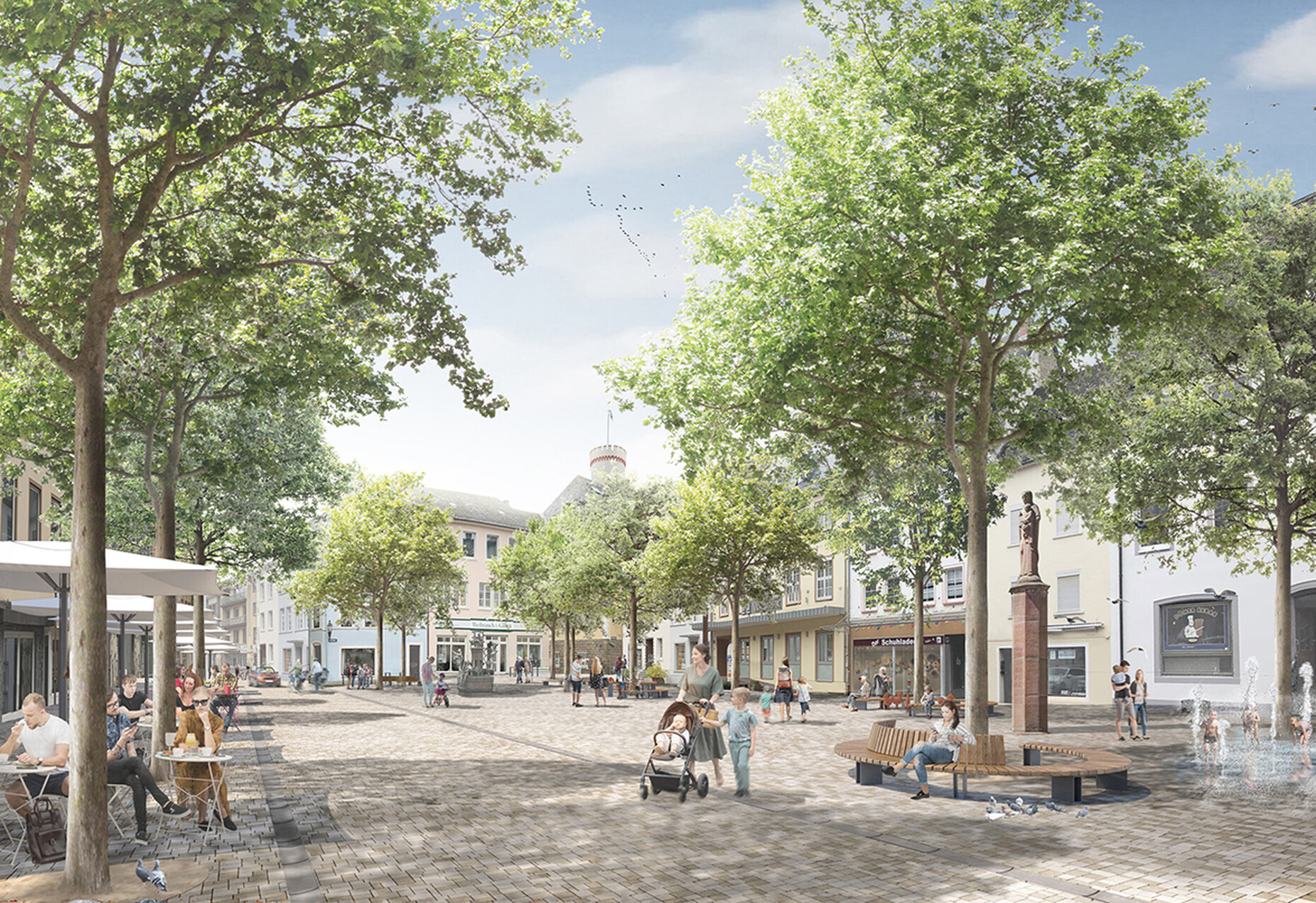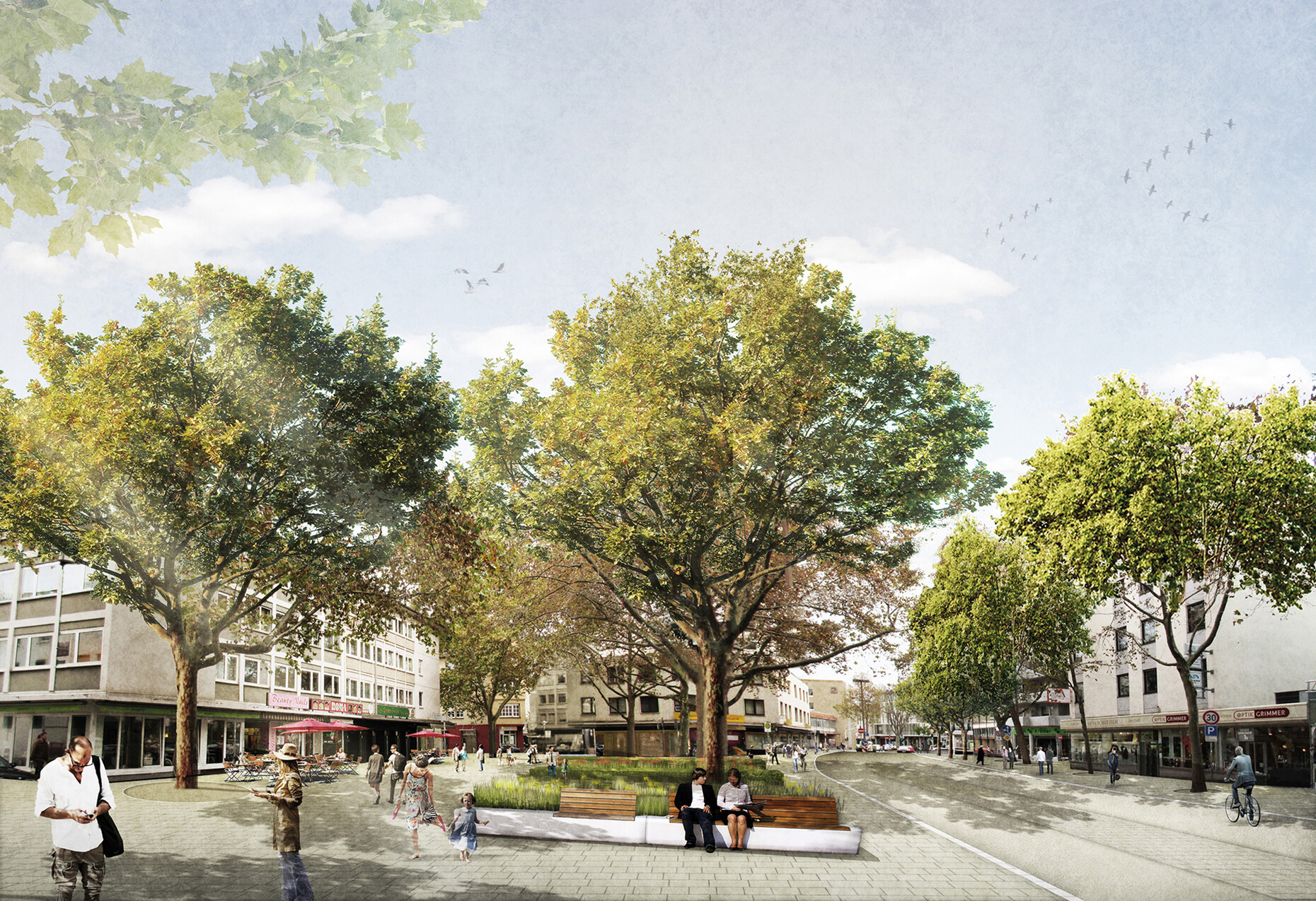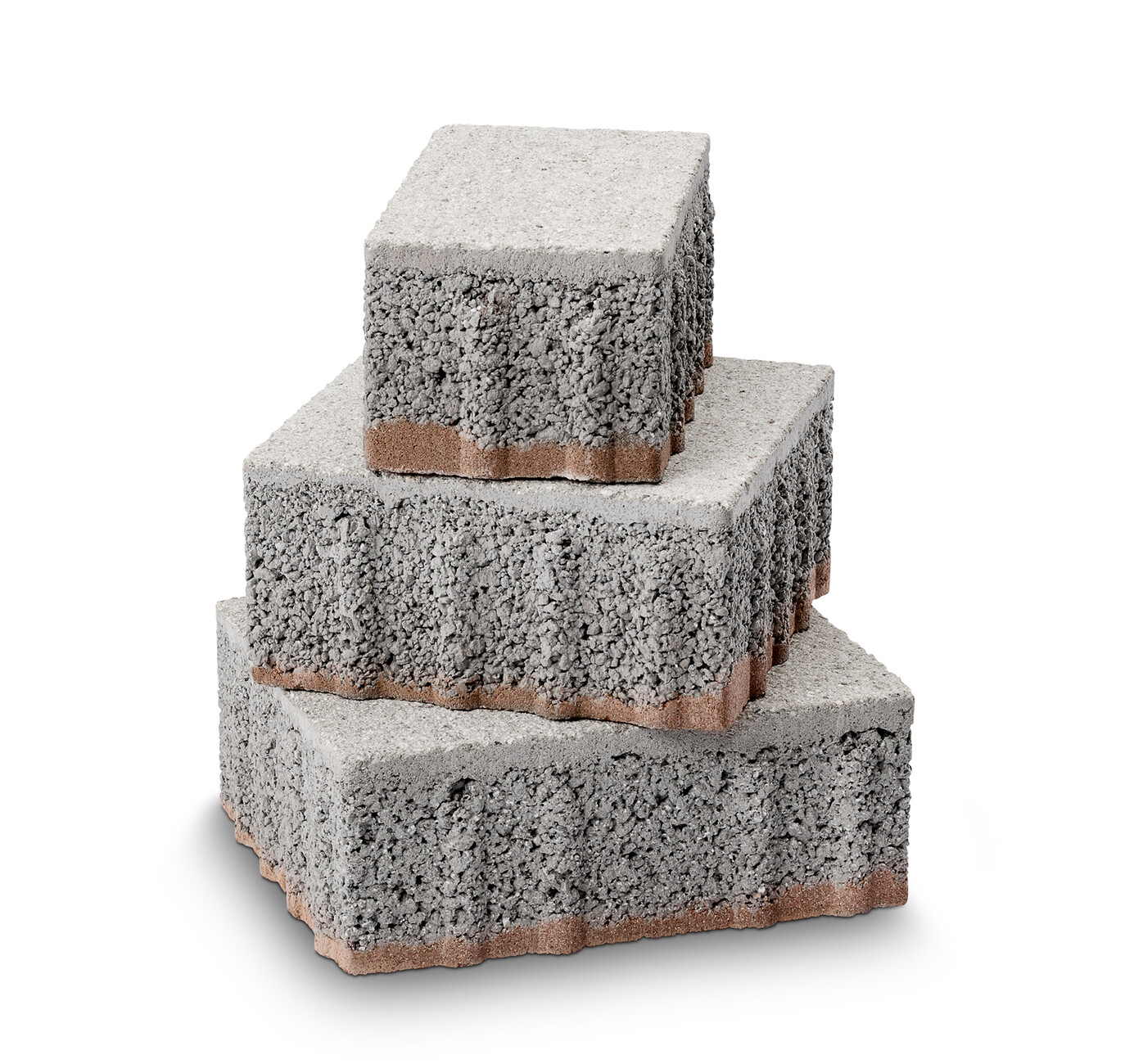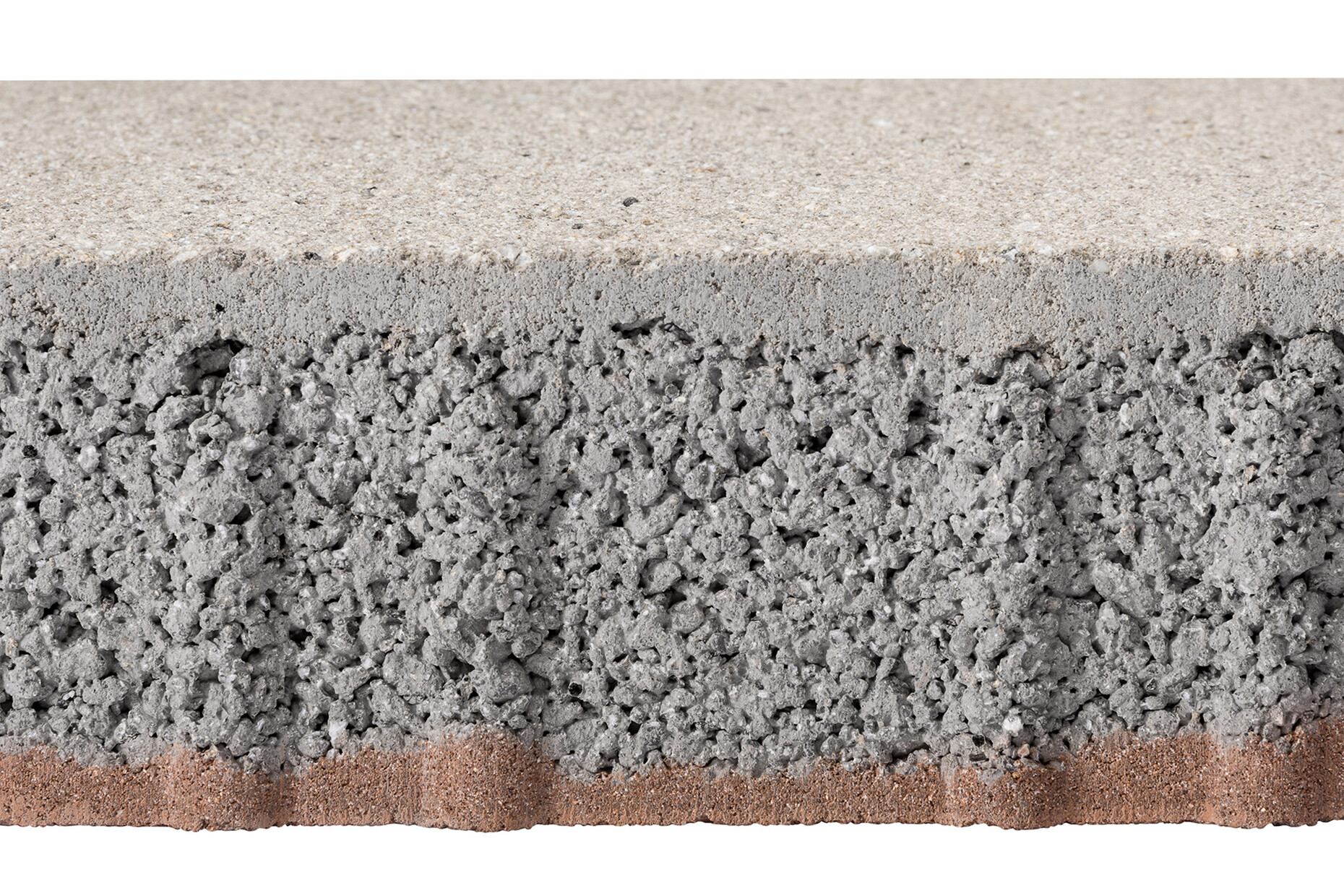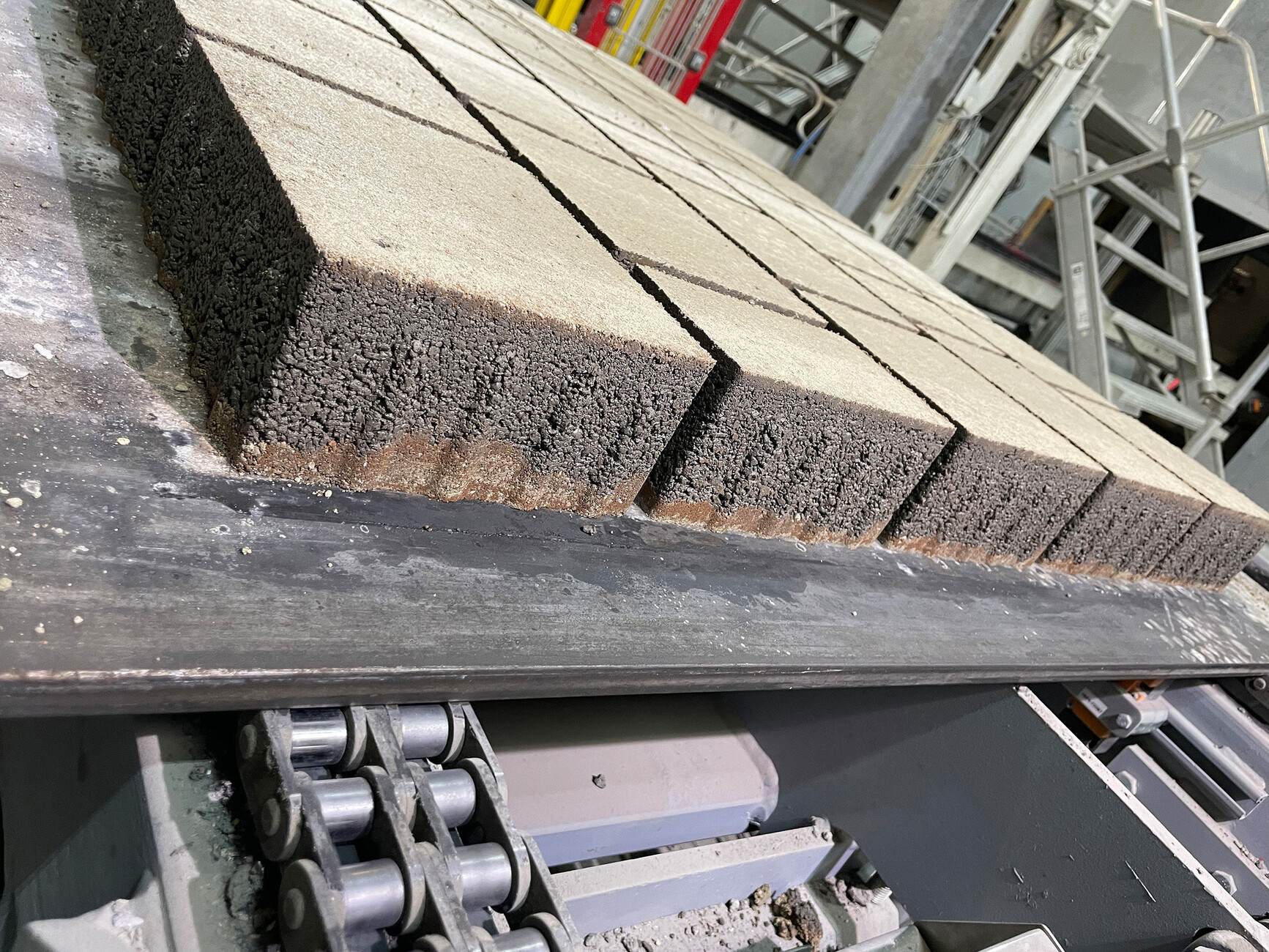Permeable paving stones
“We are determined to make a difference. In the process, all of the steps we take, be they large or small, have a common goal: of Godelmann becoming the most sustainable concrete block manufacturer in Europe,” says owner and managing director Bernhard Godelmann. Today, the company product range includes not only surface and masonry systems, slabs and special components but also wall tiles and design objects made of architectural concrete. En route to achieving its sustainability goal, Godelmann has already received the “Cradle to Cradle Certified Gold” certificate, which is awarded to products that are particularly recyclable and sustainable. Since the 1980s, Godelmann has busily focused on the efficient use of raw materials and a continuous closed loop economy – and as a consequence, has ever since been operating its own concrete recycling plant. There, 100 percent of unsaleable products or returned old paving materials are reprocessed in a specially developed recycling line and then reintroduced to the production process. Added to this is sustainable water cycle management, CO2-neutral production, and the use of renewable energy sources.
Another topic that the family-owned company, now in its third generation, has been working on for over 20 years is the creation of ecological surfacing systems for the concept of the “sponge city”. The latter provides for intermediate rainwater storage wherever the water falls, thus maintaining the natural water cycle. To this end, Godelmann has now engineered the “GDM.KLIMASTEIN” in its in-house stone laboratory: It is a brand-new paving material that reinforces surfaces without sealing them. In contrast to conventional paving blocks, the “GDM.KLIMASTEIN” has a three-layer structure.
Its surface layer functions as a catalyst zone that reflects heat irradiation, reduces noise emissions and neutralizes air pollutants. The rainwater filtered in this way seeps through the gaps in the surface and thus into the storage layer of the stone and from there into the soil. The open pores of the storage layer allow it to absorb water like a sponge and release it again after a time. This can prevent flooding from torrential downpours and simultaneously provides cooling for overheated urban areas. The capillary layer, by contrast, has a fine-pored structure and is less permeable. This allows moisture to be better stored in the stone, evaporate over time, and therefore cool the ambient air. As a result, functional surfaces can be paved for traffic without the soil being sealed. As a result, the “GDM.KLIMASTEIN” forms an integral part of the sponge city of tomorrow, as Bernhard Godelmann explains: “The ‘GDM.KLIMASTEIN’ provides new answers to the most pressing questions and is an elementary building block for the concept of the sponge city. With it, soil can be reclaimed as a natural resource.”



